Anyone that has driven their TJ down a rocky trail should agree that the lower shock mounts on the rear axle do in fact stink! They hang down and are great at grabbing rocks and such. During Thanksgiving, 2002, I was unfortunate enough to land on the passenger side lower mount and collapse it. OK….so, when you break something, you can either fix it or you can upgrade it. I spoke with Blaine, my buddy in California, about the shock mounts. Blaine had helped me with my rear disc conversion and I had seen a couple of his rear shock relocations on some friend’s TJs….so it seems like one heck of an opportunity to upgrade rather than merely replace. We set a date, a few months down the road, to coincide with a local CA rock crawling event. I would watch a friend compete on Saturday and we would wrench on Sunday. As it turned out, the LA area received some 50 year record breaking rain during the weekend I was there. The rock crawling event was cut short on account of the rain but Blaine’s garage was high and dry so Sunday’s “event” turned out much better than did Saturday’s.
Let me start by saying that this mod is much more fabrication than it is bolt on. Where as the rear disc conversion that Blaine helped me with was mostly a swap out of TJ stock parts for ZJ stock parts, this is not quite the case for relocating the rear shocks. Blaine does great fab work. If you don’t, I would NOT recommend your jumping into this modification without the assistance of someone who is comfortable around this kind of project. The average Jeeper is most likely not up to doing this by themselves. If you are average, do yourself a favor and find a competent person to assist you in this project. In other words, consider this fair warning as to the difficulty of this project.
NOTE: I have been asked to add another warning…. DO NOT MELT YOUR GAS TANK WHEN YOU DO THIS MOD! A person that did this mod asked me to tell you that you need to be careful as to how much heat can be transferred from the hot frame to the nearby plastic tank. So, considered this fair warning, a second time, as to the potential difficulty of this project.
As I said, Blaine does great fab work. Of course, I already knew this, which is why I was willing to let him cut a couple of sections out of my frame. Part way through the morning, he had to go into the house to make a phone call. As he was leaving the garage, he asked me, “Do you know how to use a cutting torch?”. I replied, “No”. He paused for a second and then said, “Well, then I don’t think you should play with the plasma cutter”. He smiled and went into the house. I sat in the garage and waited for him to come back out….needless to say, I didn’t play with the plasma cutter. The last thing I needed was to ask Blaine if he might be able to weld my frame back together! Enough chit chat….time to get to the modifications.
Let’s run down the parts we used in doing this modification.
The first thing to do was to pull the wheels off of the TJ. Blaine put a pair of jack stands under the rear bumper and we adjusted them so that once the wheels were off and the bumper was resting on the jack stands, the bumper was once again sitting at ride height.
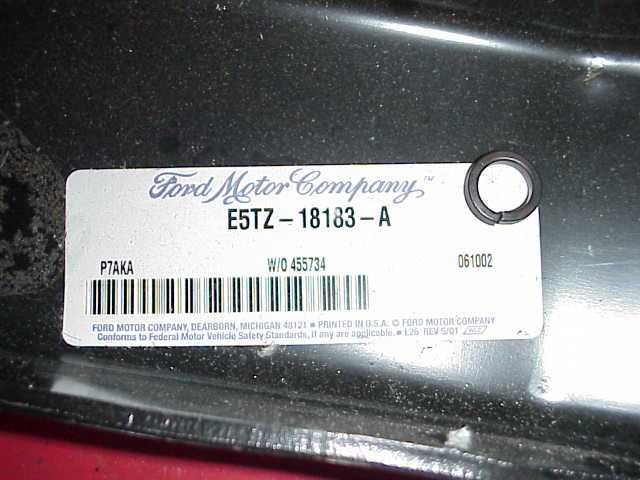
Here is the part number of the shock tower we used. If I remember correctly, Blaine said it was from a pickup truck. You will need two of these (one for each side). Cost is in the $20 each range.
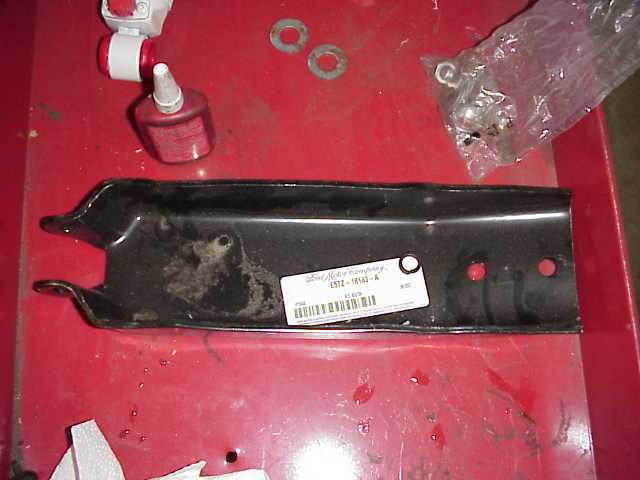
Here is a picture of the full shock tower. The lower portion (right hand side) will be cut off once the proper length is determined. I’m sorry that I can’t just tell you how long to make it. It depends on your spring ride height, your bump stops, and your axle droop. All three must be taken into consideration when determining where (and thus how long) the upper mount is to be located on the TJ’s frame.
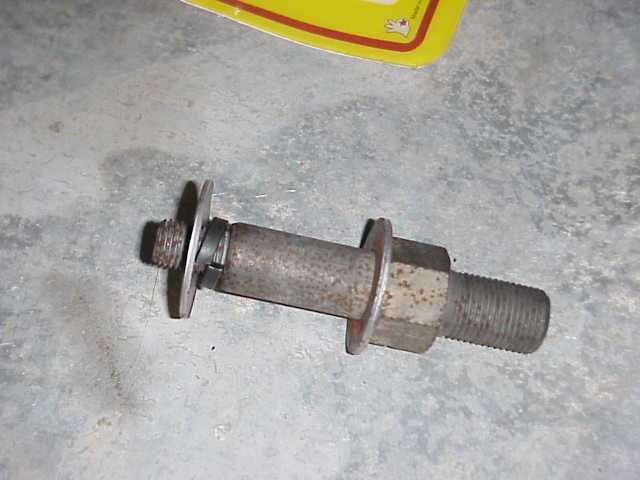
You will need a lower shock mount. Blaine had some 5/8″ shock pins left over from some previous work. These shock mounting pins were used for a Chevy 1 ton application. Note also that there is a high collar lock washer on the above shock pin. The bushing was just a tiny bit thick for this mounting pin so Blaine slipped the lock washer on the pin to act as a small spacer. The same affect could have been had by cutting a thin slice of tubing and using it as a spacer.
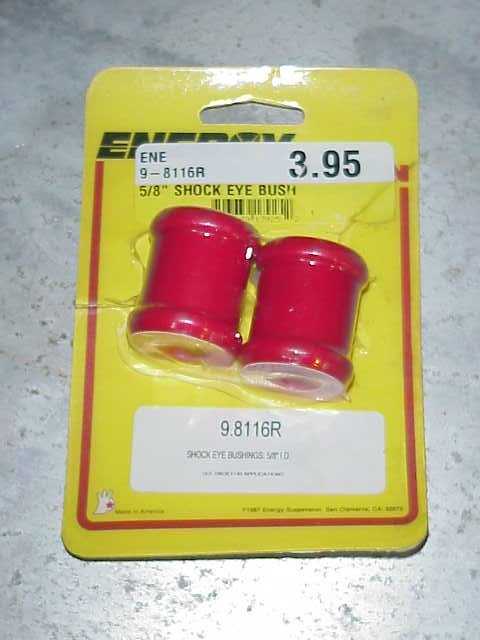
The shock eyes in the Rancho shocks we used were too large for the above 5/8″ mounting pins. As delivered, the bushing hole on the shocks were too large and allowed the shock to flop around on it. You must remember that the shocks being mounted were not intended for a TJ application. You will want to pick up a pair of 5/8″ shock eye bushings for the bottom of the shocks so that it will fit properly on the mounting pin. These are made by Energy.
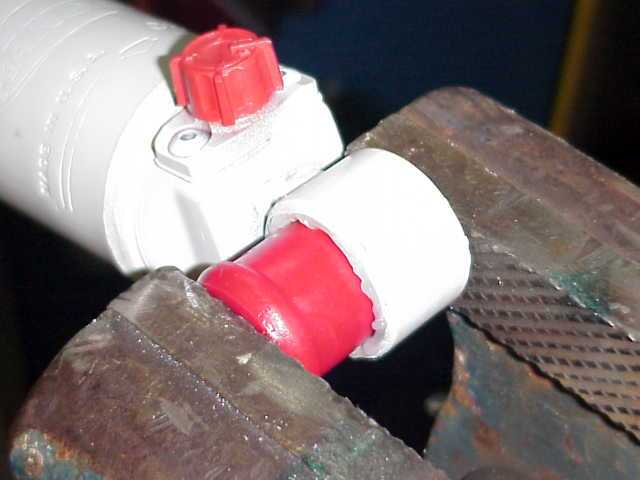
Cut the end of the existing bushing eye off and push it out of the shock loop. Lube the new bushing with some polyurethane grease and carefully press it into position using a bench vise. Sometimes the bushing won’t align correctly so take your time and you should be able to get it.
The shocks we used were the Rancho RS-9000 series adjustable shock. I’ve been running this type of shock since going to my 6″ lift. I ended up with the newer version that has the 9 position adjuster since the old 5 position model is being phased out. I picked up a pair of RS-9005 shocks and brought them with me to Blaine’s house. He had the previously mentioned parts waiting for me when I got there.
Please note that not all Rancho shocks have the same size shock eye. As such, your shock (selected because of its correct length for your application) may not need the bushings and it may even come with shock pins (some RS-9000 shocks do). The 9005 shocks we used required new bushings in order to fit what we were using for mounting hardware. Your situation will most likely vary. This is all part of the fabrication part of this project, getting the pieces and parts to all fit together to provide you with a great Jeep modification.
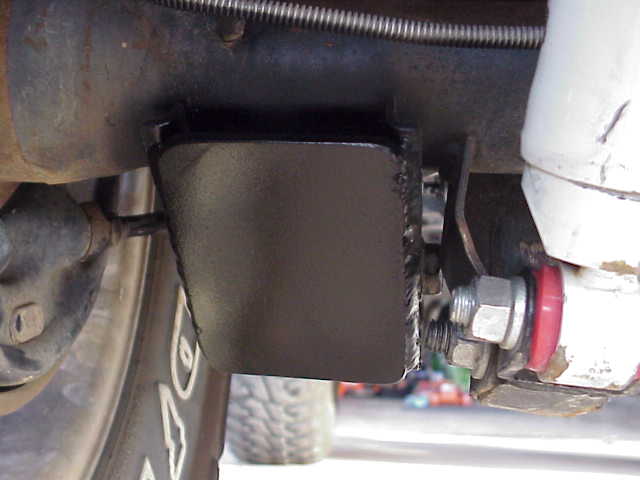
We started at the bottom and worked our way up. First would be the lower shock mount. Here is the existing shock mount (with extenders on it) and next to it is the lower control arm bracket. My bracket has been boxed in and a skid plate put on the back of it. Since some type of bracket had to be fabbed for mounting the shock, Blaine decided to use this skid plate as a mounting surface for the bracket. He has done several of these mods and normally would fab a bracket to be welded directly onto the axle tube. So, some slight alterations were done to accommodate my different setup.
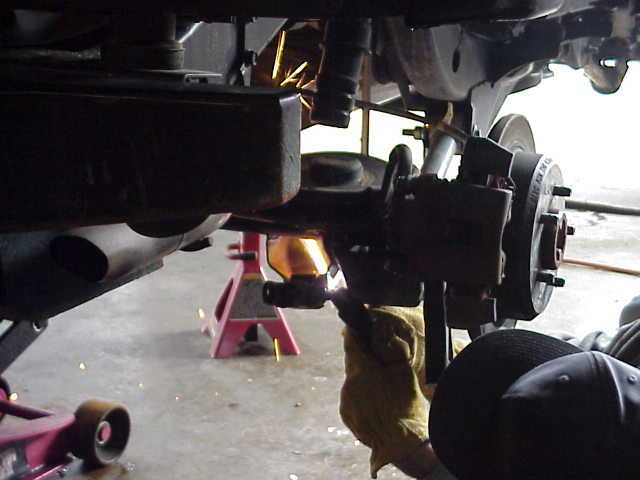
OK, we had an idea of what the lower bracket would be so Blaine decided to make some extra room down there. With plasma cutter in hand, he made short work of the factory shock mounts. Never again would they be the source of getting hung up on a rock! Both sides were removed with just a couple minutes effort.
I should comment here about the optimum shock mounting angle. Obviously, the method by which the lower shock mount is attached to the axle will also determine the upper shock mount location at the frame. With the axle sitting at ride height (remember, we already have the frame sitting at ride height), one would want the shock to be nearly perpendicular to the lower control arm. As the axle travels upwards and downwards from this position, the shock will have maximum effect on the axle. Moving the shock away from this 90 degree position will decrease the shock’s efficiency. So….knowing this, we want to make the lower mount to accommodate the preferred perpendicular mounting angle (at normal ride height). At the same time, we need to keep an eye on where the upper mount will be situated in the frame.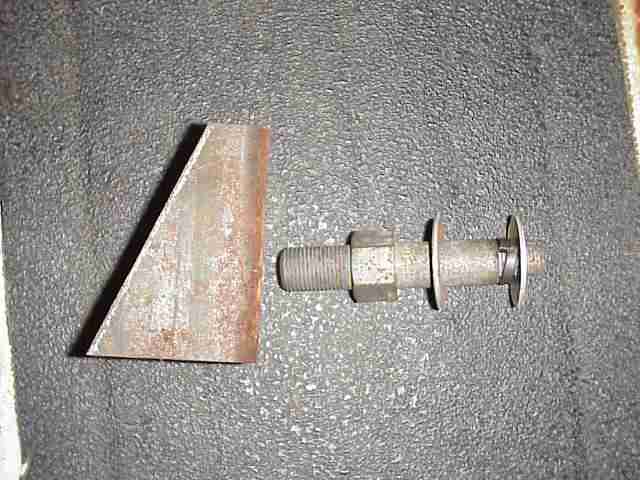
Blaine made a number of measurements with me holding the shock in position (~90 degrees to the control arm) so he could determine the angle needed for the bracket. He cut a piece of square tubing at this angle to be used as the mounting bracket. We drilled a hole into the bracket and bolted the shock pin into position.
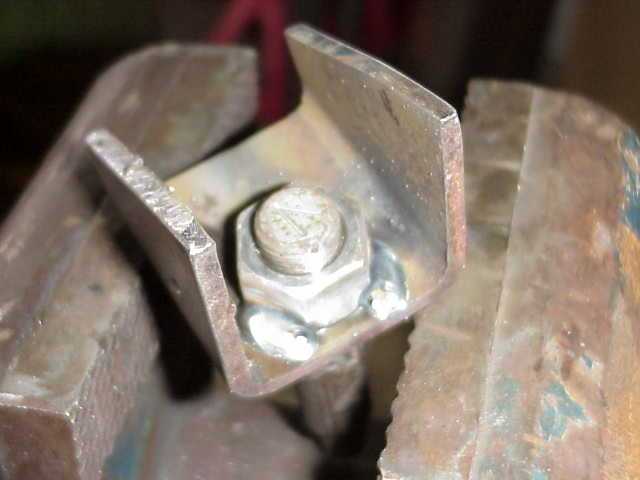
Blaine tack welded the nut into position on three sides. If I bend a pin at some point, it should be pretty easy for me to unscrew it and put in a new one.
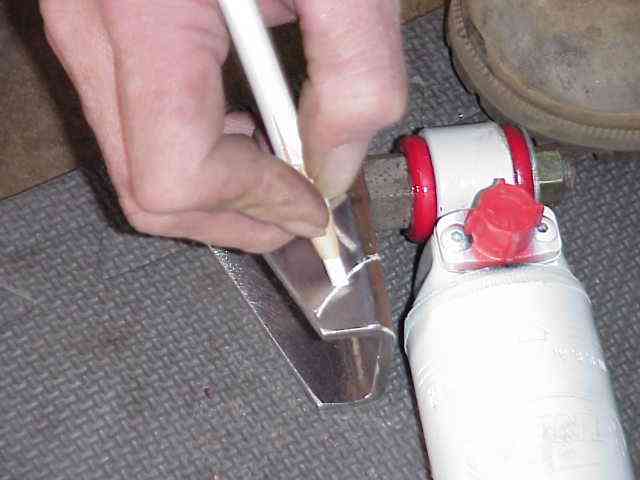
Well, we thought we had it all just right but we forgot about one thing. When the axle was cycled through its full range, the shock body was going to hit the new lower mounting bracket. Blaine is marking the bracket for the necessary clearancing cut that he later did on the chop saw. Remember, this project is as much of a fab project as it is a Jeep modification…..these things are going to happen.
Rear Shock Relocation
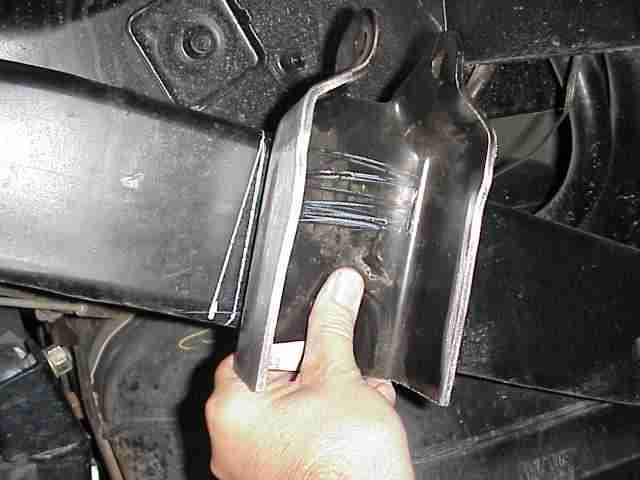
With most of the work done on the lower mount, we tacked it into position and focused some attention on the upper mount. I can’t begin to tell you everything that was taken into consideration when the upper mount’s position was determined. This picture is taken on the driver’s side of the vehicle. Having already determined where the center of the shock rod would be traveling, Blaine centered the shock tower and marked in some lines that would serve as guides for the plasma cutting. In the above picture, the shock tower had been cut to length. We had cycled the suspension through is full range while working on the lower mounting bracket and this had helped determine the proper length of the upper mount shown above. This is also all used in conjunction with the max and minimum shock lengths. You don’t want your shock to serve as a bump stop for your springs. Likewise, you don’t want it to limit your droop.
You can see in the above picture that there are two lines to the left of the shock tower in the above photo. One is parallel to the mount while the other opens away from it as it runs to the bottom of the frame. This 1/4″ wide gap at the bottom will be filled by spreading the bottom of the shock tower outwards (flaring it if you would). This causes the tower to wedge fit into the notch that will be cut into the frame.
What you can not see in the pictures is that the top of the shock tower will be tilted out a small amount, about a quarter inch, to allow for better clearance when the shock body goes up towards compression. This means that the depth of the cut into the frame is deeper at the bottom than it is at the top.
With the the measurements checked a couple more times, a bit more checking with the shock in place, etc., Blaine sketched in the remainder of the lines that would serve as his guide when using the plasma cutter. He tossed me the shock towers to clean up in preparation for welding them into position.
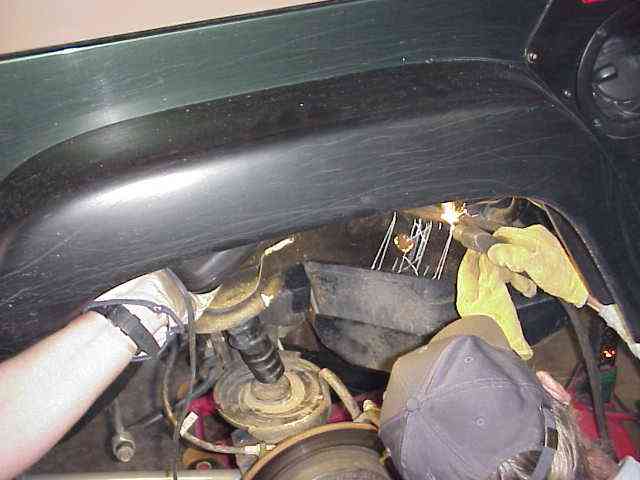
You can see the lines drawn on the frame. Blaine is carefully removing what to me, anyways, looked to be a HUGE section of my frame. Actually, I was not worried about it. I’ve seen what he can do on his Jeep and I knew my TJ was in good hands.
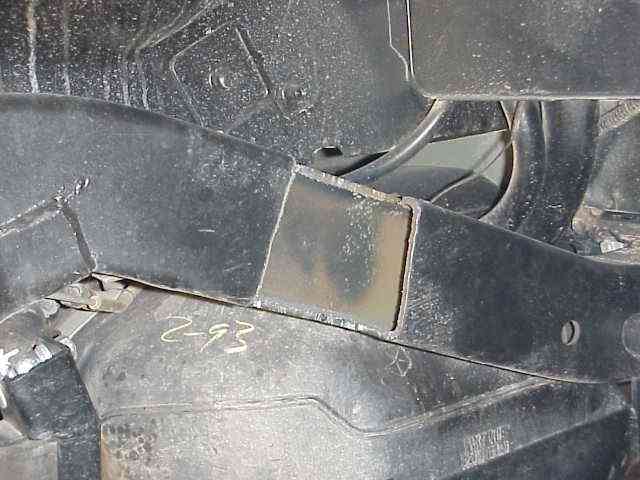
Blaine finished the removal of the driver’s side frame section. As you can see, the cut is narrower at the top than it is at the bottom. As I mentioned before, the bottom of the shock tower will be flared out with a rather large hammer, once it is tacked into position.
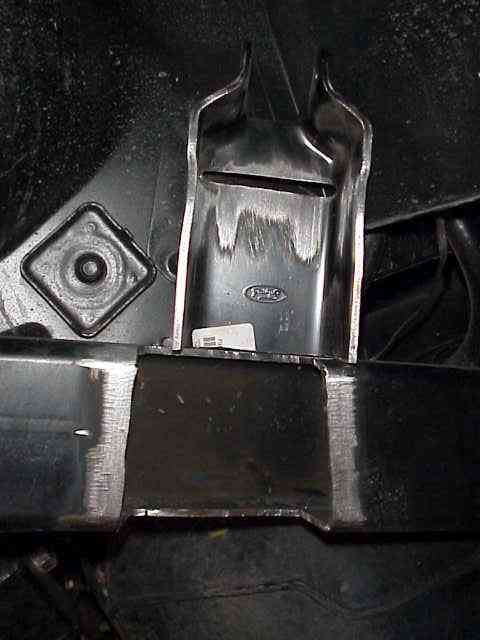
I cleaned up the areas on the frame where Blaine would be welding while he plasma cut a slot into the back side of the shock tower. You can clearly see this notch in the photo above. This was a slight change compared to the previous installs that Blaine had done.
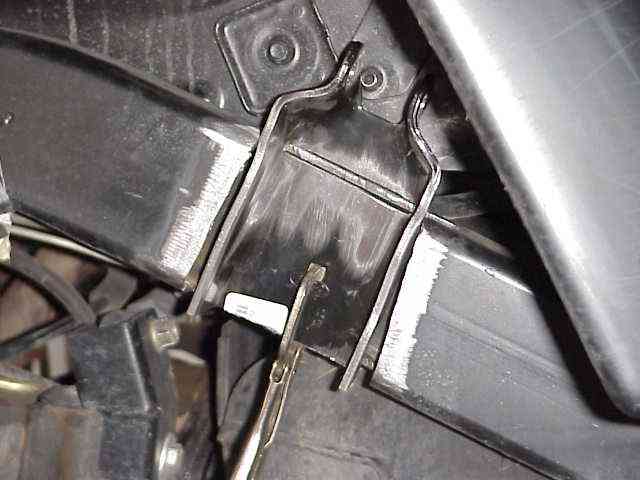
With the shock tower now properly clamped into position, you can see why the slot was cut in the back of the shock tire. Blaine will now able to weld the top of the tower on all three sides. You can also see the gap at the bottom of the tower. Once the tower is tacked into position, Blaine will pound the bottom of the shock tower out to take up this gap and provide a good fit on which to weld in the bottom of the shock tower.
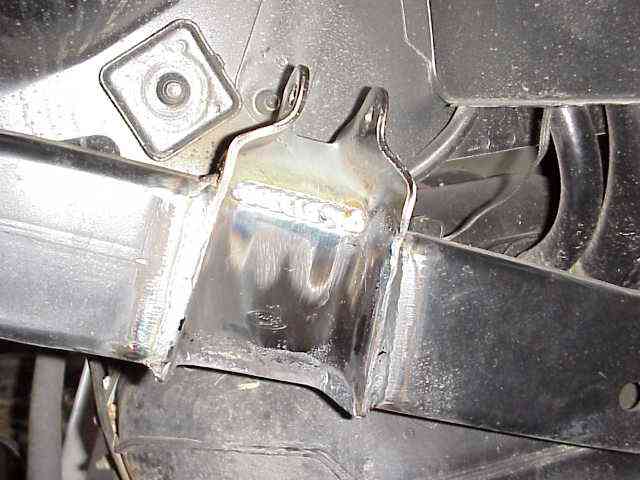
Here is the shock tower now welded into place. I am no welding expert (heck, I am not even a welding novice), but you gotta love those nice smooth welds! Oh yeah, those are there to stay!

A view from the bottom of the shock tower (kind of). OK, so my upside down picture taking isn’t all that good, but you can get the idea, right?
Rear Shock Relocation
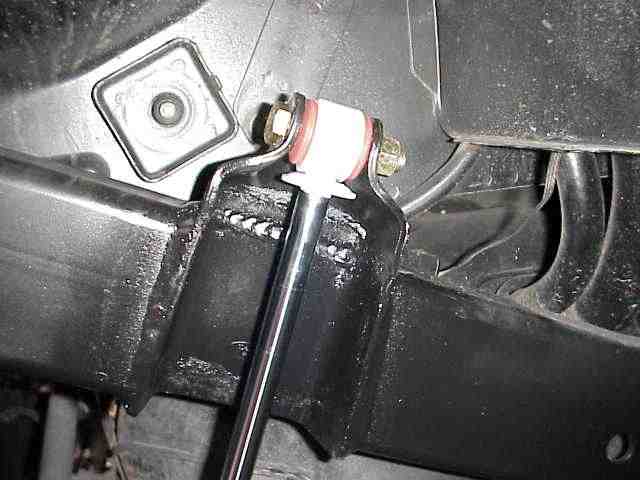
Toss on a coat or two of spray paint and this mod looks like it’s not a mod, but rather a factory mount (OK, so it has that FORD logo embossed into the shock tower). I mentioned that FORD logo to Blaine….you know, having Ford parts on my TJ….he said that as long as it didn’t move and you didn’t have to lube it, it probably wouldn’t fail. I guess I can live with that!
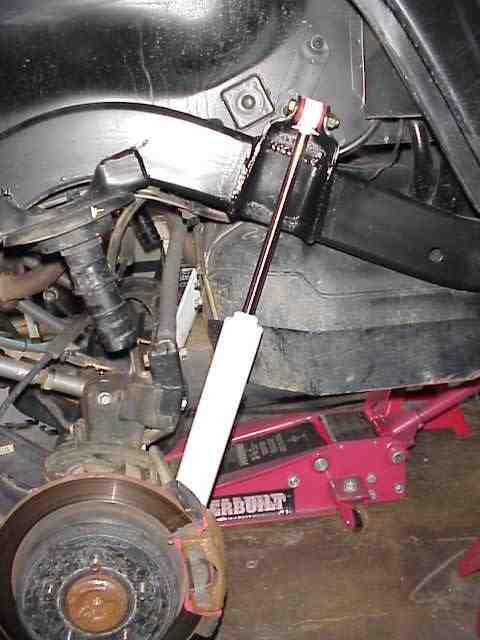
Here is another shot. I honestly don’t remember if this was at full droop or not. If it is not, then it was getting close to being at full droop. Time to put the springs back in, find some tires, and take it for a test spin!
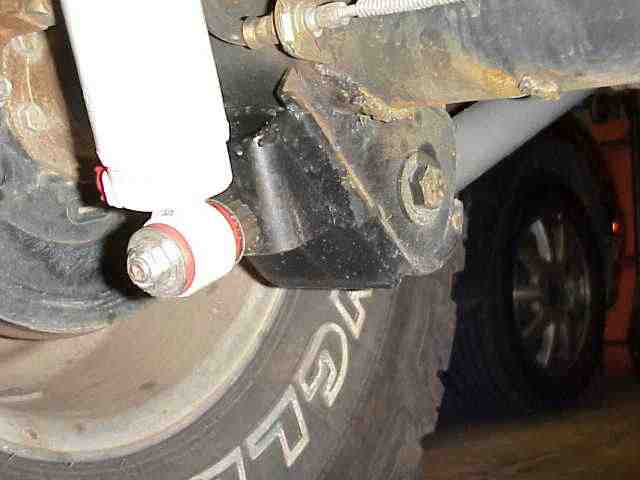
I was looking back through the write-up and realized I had totally spaced out snapping a picture of the lower shock mount, after it was welded into place. So, here is a picture of what the bottom end looks like after it is finished.
One thing that myself and others who have done this modification found was that the on-road ride was somewhat improved. No one really knows why….but the back end feels a little more firm when going over those small bumps in the mall parking lots, etc. Obviously, this modification was done to improve the available shock travel for off-road use, but it was nice to realize the added benefit of seeing a bit of on-road handling improvement also.
I guess that is about it for this write-up. As you can see, it is pretty straight forward. Remember, measure twice cut once. If in doubt, measure ten times and still cut only once! OK?
Many thanks to Blaine for helping me on this project. Without your fabrication skills, it simply would not have happened. I truly appreciate your help on this.
March 29, 2003
I had a request for a few more pics so I took a few this morning while I was out working in the garage. I hope these give some better views of everything hooked up and ready to go.
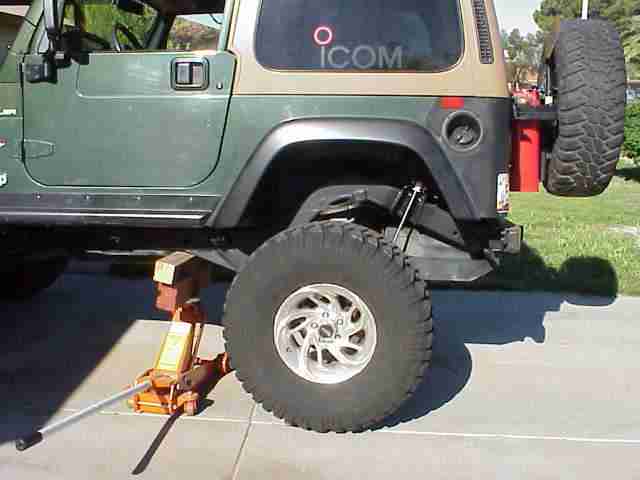
Sorry, I had no rocks in the drive way so some wooden blocks on the floor jack will have to do. The tire is about a quarter inch off of the ground in this and the following shots.

For those who wanted to see the shock placement from the rear of the vehicle….here you go!

Here is the shock at full extension. I still have about 3/4″ of droop left on the axle when I disconnect the shock. Since we did the install on a Sunday, we wouldn’t have the opportunity to go shock shopping once the project was under way. We could have mounted the upper mount a little lower, but I didn’t want to go that route. So, I’ll let the shock limit the droop for now and the next time around, I’ll get longer sway bar links (they are the next most limiting component) and a slightly longer shock. I still have a couple inches of room left for a longer shock body so it should not be an issue.
